The head gasket assists in preventing any leaks from occurring in the engine block. In simple words, the head gasket acts as a seal between the cylinder head and the engine block. Since there is oil and coolant circulating around the cylinders, the head gasket is there to prevent those two from mixing or leaking out. A lot of car owners wonder if coolant can leak from the head gasket.
In this article, I will be talking about head gaskets, their purpose, and what happens when a head gasket fails.
Key Takeaway
- Coolant can leak from the head gasket if there is damage near the coolant passages on the head gasket. This will allow coolant to leak inside the combustion chamber, or outside of the engine.
- If your head gasket is leaking coolant, you will notice a loss of coolant, visible coolant leak on the ground, white smoke from the tailpipe which suggests that coolant is being burnt in the combustion chamber, and engine overheating from not enough coolant.
- A car can still run with a blown head gasket, but not for long. The more you drive, the bigger the risk of engine overheating.
- A head gasket can also fail near a coolant passage and oil passage and cause oil and coolant to mix.
Can Coolant Leak From The Head Gasket?
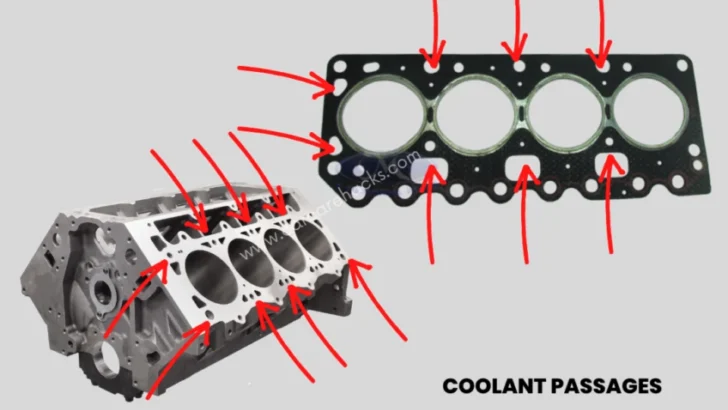
Modern vehicle motors have two distinct sections: the engine block and cylinder head. The head gasket is a precision-formed gasket made out of multi-layer steel designed to provide an airtight seal between the cylinder head and the engine block.
By providing an airtight seal between the cylinder head and the engine block and making sure that there is no loss of compression, the head gasket also makes sure that the coolant and oil that are circulating around the engine do not mix. These passages serve to transfer oil or coolant throughout different parts of the engine, adjusting temperatures or preventing wear on components without mixing.
When the head gasket gets damaged from overheating engine, a portion of the gasket itself becomes crushed, blown out, or otherwise damaged. If the head gasket fails close to a coolant passage, it will allow coolant to leak from the head gasket internally in the combustion chamber or externally to the engine block.
The most common consequences of a blown head gasket are a coolant leak, an oil leak, or loss of compression.
The head gasket helps circulate coolant from the radiator into the cylinder head and engine block. Since the engine is just a giant heat machine, it generates high temperatures, even when it is only idling. The coolant acts like an automatic climate control that helps regulate temperatures to prevent the engine from overheating.
When the coolant leak from the head gasket is external, you will notice a coolant on the side of the engine block. An internal leak is a bit more serious. When the coolant leak from the head gasket is internal, it can cause oil and coolant to mix together, destroying the effectiveness of both fluids.
How Do I Know If My Head Gasket Is Leaking Coolant?
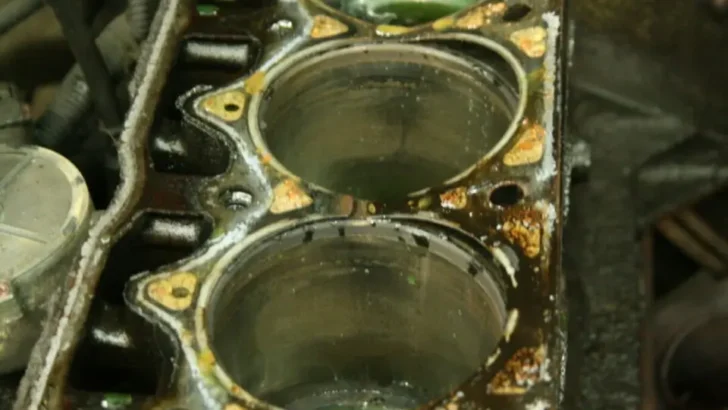
If you suspect that your head gasket is blown and leaking coolant, there are a few ways to verify this.
1. Loss of coolant

All engines rely on coolant to keep them at their operating temperatures. The running engine is constantly producing heat and requires constant cooling down. The way that the engine is getting cooled down is by coolant circulating from the radiator into pre-made coolant passages around the cylinder head and engine block.
The head gasket is there to create an airtight seal between the cylinder head and the engine block. By creating this airtight seal, the head gasket makes sure that the coolant is flowing in the coolant passages and not leaking out. If the engine somehow reaches a temperature above 250 degrees Fahrenheit, there is a good chance that the head gasket will get damaged.
When the head gasket gets damaged close to a coolant passage, it will allow coolant to leak inside the cylinder or outside on the side of the engine block. Either way, there will be a loss of coolant which you may notice by checking the coolant level.
2. Visible coolant leak
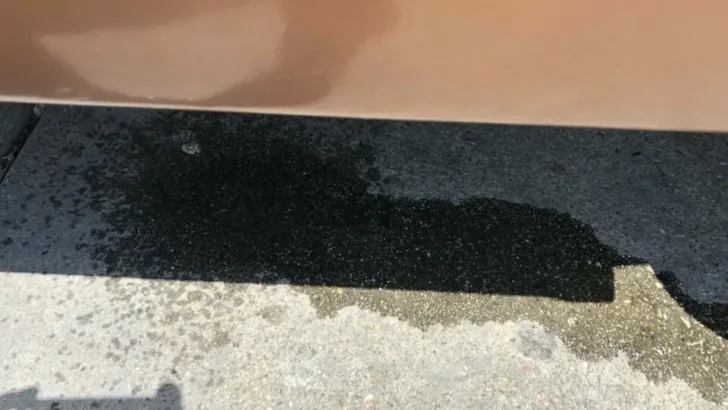
When a head gasket is blown, it can cause coolant leaks, oil leaks, or loss of compression. If you noticed that your coolant is missing, there is a good chance that there is an external leak. This is when the coolant is escaping out of the engine and dripping on the side of the engine.
To check for visible coolant leaks, start your engine and wait for the engine to get warmed up. When the engine gets warm, the thermostat will open. This is the best time to check for external coolant leaks. Remove any plastic covers to better expose the engine.
If the head gasket is externally leaking coolant, you will be able to notice coolant leaks on side of the engine. Depending on how badly the head gasket is blown, the leaks may be slightly hard to notice or if the gasket is very damaged, you may notice a huge amount of coolant dripping on the engine block.
3. White smoke from the tailpipe
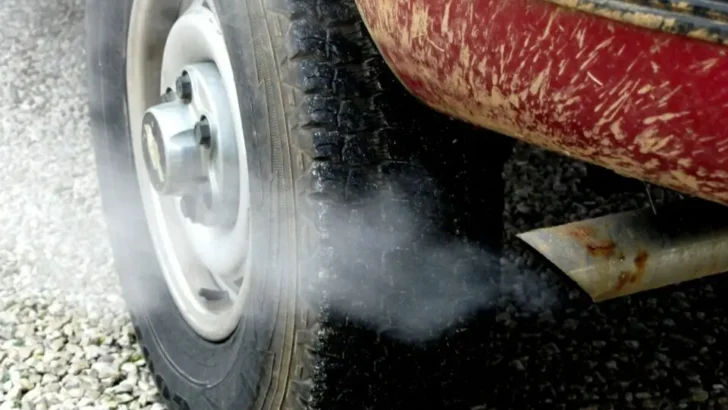
When a head gasket is blown, it can allow coolant to escape from the pre-made passages and get into the combustion chamber. When coolant leaks in the combustion chamber, it will get burned off and sent to the exhaust pipe.
If the head gasket is leaking coolant internally, you will notice white smoke coming from the tailpipe. This happens when the head gasket is damaged near a coolant passage and allows coolant to leak inside the combustion chamber and get burned with the air-fuel mixture.
Note that if coolant is leaking into the combustion chamber, there won’t be just a little bit of white smoke from the tailpipe when you first start the car. You will be able to notice constant white smoke from the exhaust pipe as well as a loss of coolant.
4. Engine running warm
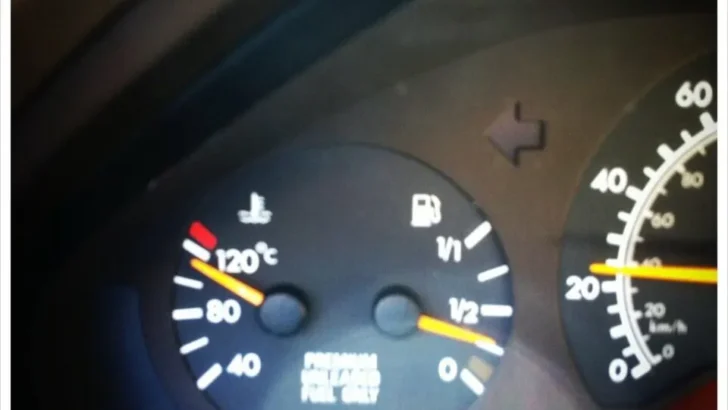
A blown head gasket can be a costly problem, especially if you don’t identify it soon. If your engine is running warmer than usual, it could be an indication that the head gasket has failed.
If the head gasket is leaking coolant, soon enough there won’t be enough coolant in the cooling system to absorb the heat from the engine. This will result in the engine running warmer than usual and might even overheat.
Some vehicles have a coolant level warning light that will alert the driver when the coolant level reaches a critical low. However, this is only for modern vehicles. On most vehicles, you will be able to notice the temperature gauge going hot and by then it is usually late and the head gasket will start to leak coolant.
What Does Coolant Look Like With a Blown Head Gasket?
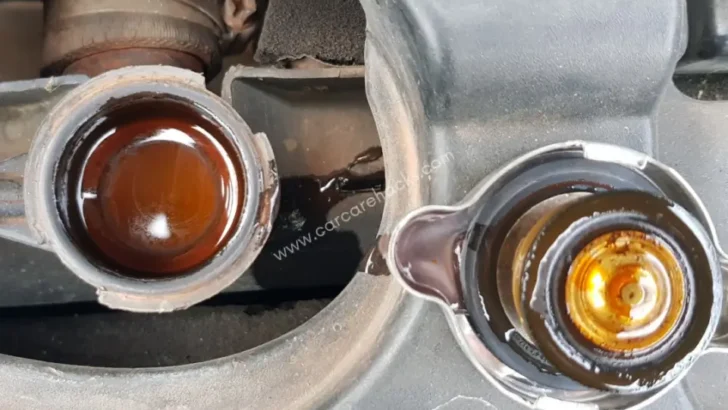
Depending on where exactly the head gasket fails, you are looking at an oil leak, coolant leak, or combustion leak. In most cases, it is a combination of all three. The head gasket provides an airtight seal between the cylinder head and the engine block. There are pre-made passages for oil and coolant and the head gasket makes sure that the two don’t mix.
When the head gasket fails near an oil and coolant passage, these two will mix. This will result in coolant presence in the engine oil, as well as engine oil presence in the coolant. A coolant with a blown head gasket will change from the original red or green color to yellow mustardy color.
The appearance of the coolant likely will depend on how badly the head gasket is damaged and for how long it has been damaged. But since there is engine oil in the coolant, there is a great chance that there is coolant in the engine oil.
So, move on to checking the oil dipstick. We all know that engine oils have a clear yet dark color. If there is a coolant presence, the engine oil will change into a milky color and will be much thicker, almost like mayonnaise.
Will a Car Still Run With a Blown Head Gasket?

Depending on the extent of the damage, the car may still run with a blown head gasket. However, a blown head gasket allows oil and coolant to mix which actually destroys their properties. A coolant mixed with oil is unable to absorb heat from the engine and the engine oil mixed with coolant will not lubricate the moving parts of the engine. This will result in catastrophic engine failure.
When the head gasket blows on a vehicle, the smartest thing to do is pull over and assess the damage. In order for the head gasket to fail, the engine needs to reach a temperature of over 250 degrees Fahrenheit. This means that the engine has a serious issue that is causing it to overheat. A blown head gasket is only a byproduct of the engine overheating, it is not the cause of it.
When an engine overheats, it is usually due to a faulty cooling system or low engine oil. Both the engine oil and coolant absorb the heat from the engine and prevent it from overheating. You first need to look into the engine and see what is causing it to overheat.
But, in any case, if you learn that the head gasket is blown, it is better to call a tow truck and tow your car to the repair shop. Replacing a blown head gasket is expensive, but it is more expensive to change the complete engine.
